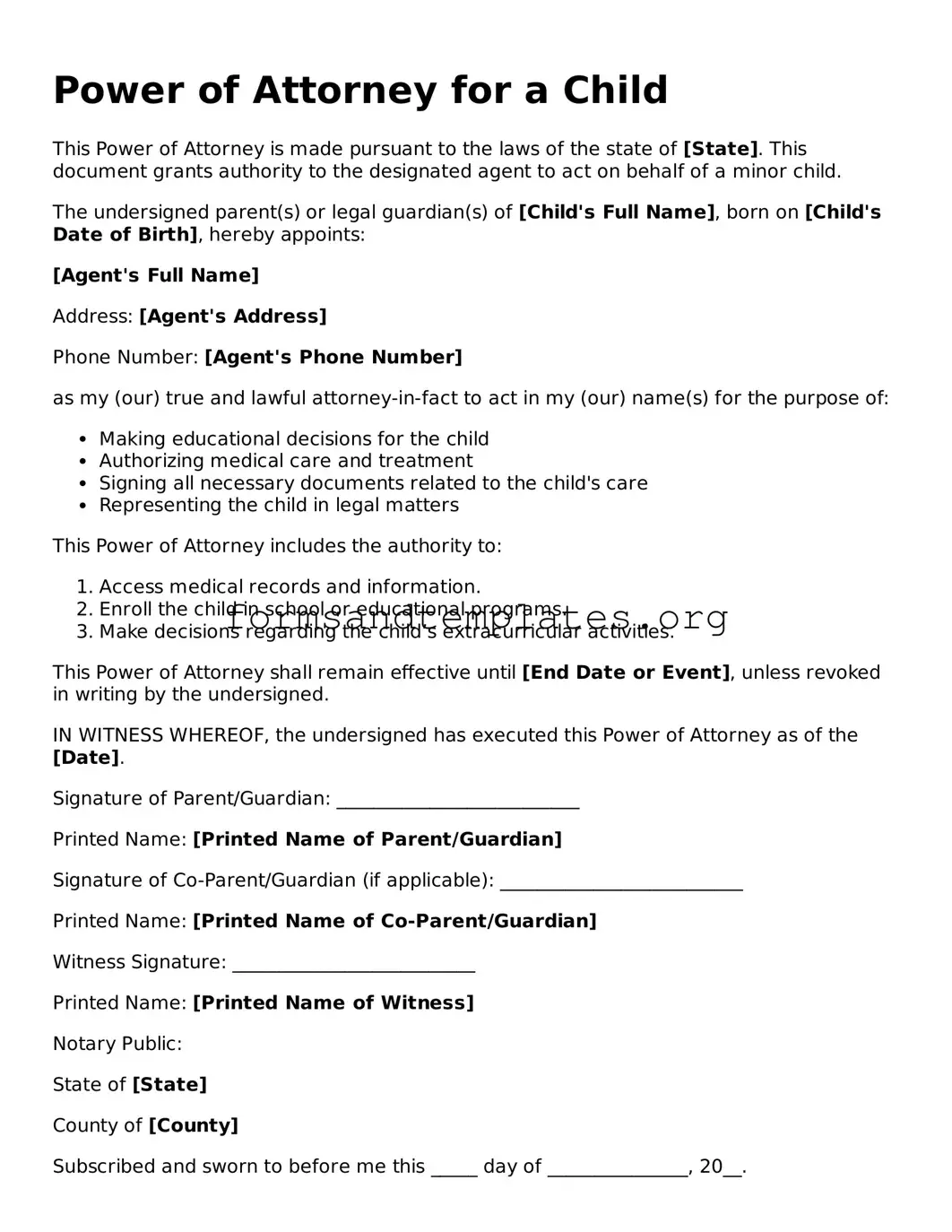Power of Attorney for a Child
This Power of Attorney is made pursuant to the laws of the state of [State]. This document grants authority to the designated agent to act on behalf of a minor child.
The undersigned parent(s) or legal guardian(s) of [Child's Full Name], born on [Child's Date of Birth], hereby appoints:
[Agent's Full Name]
Address: [Agent's Address]
Phone Number: [Agent's Phone Number]
as my (our) true and lawful attorney-in-fact to act in my (our) name(s) for the purpose of:
- Making educational decisions for the child
- Authorizing medical care and treatment
- Signing all necessary documents related to the child's care
- Representing the child in legal matters
This Power of Attorney includes the authority to:
- Access medical records and information.
- Enroll the child in school or educational programs.
- Make decisions regarding the child’s extracurricular activities.
This Power of Attorney shall remain effective until [End Date or Event], unless revoked in writing by the undersigned.
IN WITNESS WHEREOF, the undersigned has executed this Power of Attorney as of the [Date].
Signature of Parent/Guardian: __________________________
Printed Name: [Printed Name of Parent/Guardian]
Signature of Co-Parent/Guardian (if applicable): __________________________
Printed Name: [Printed Name of Co-Parent/Guardian]
Witness Signature: __________________________
Printed Name: [Printed Name of Witness]
Notary Public:
State of [State]
County of [County]
Subscribed and sworn to before me this _____ day of _______________, 20__.
Signature of Notary Public: __________________________
My Commission Expires: ________________
